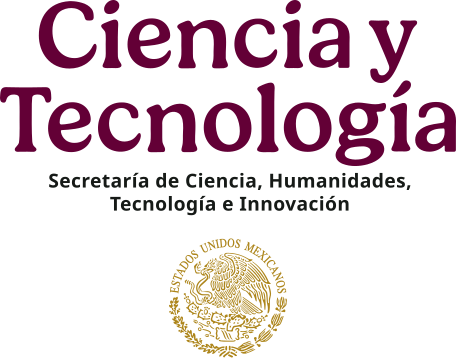Contemporary Trends in Immigration to the United States: Gender, Labor-Market Incorporation, and Implications for Family Formation
DOI:
https://doi.org/10.17428/rmi.v2i5.1251Palabras clave:
international migration, gender, immigrant settlement, labor market, United StatesResumen
This article provides an overview of contemporary trends in immigration to the United States and a descriptive analysis of gendered patterns of immigrants’ economic incorporation. Since the 1970s, both legal and illegal female immigration to the United States has increased steadily, suggesting a trend toward more permanent settlement compared with that of the past. Today, more than half of the immigrants to the United States are female. Although these women often migrate for reasons similar to those of men (such as seeking better economic opportunities or escaping persecution and extreme hardships), their experiences with labor-market incorporation and family formation differ from those of men, raising new issues for the understanding of the role of gender in immigrant settlement and adaptation.
RESUMEN
Este artículo presenta una visión general de las tendencias contemporáneas de inmigración a los Estados Unidos, y un análisis descriptivo por género de patrones de la incorporación económica de los inmigrantes. A partir de los setenta, la inmigración femenina legal e ilegal a los Estados Unidos ha aumentado ininterrumpidamente, sugiriendo una tendencia hacia un asentamiento más permanente, comparado con el del pasado. Hoy en día, más de la mitad de los inmigrantes a los Estados Unidos son mujeres. Aunque estas mujeres frecuentemente migran por razones similares a aquellas de los hombres (tales como la búsqueda de mejores oportunidades económicas o escapar de persecución o condiciones extremas), sus experiencias de incorporación al mercado de trabajo y formación familiar son diferentes a las de los hombres, generando nuevas preguntas para entender el papel del género en el asentamiento y adaptación de los inmigrantes.
Referencias
Clogg, Clifford C., Scott R. Eliason, and R. Wahl, “Labor-Market Experiences and Labor-Force Outcomes: A Comprehensive Framework for Analyzing Labor-Force Dynamics”, American Journal of Sociology, 95, 1990, pp. 1536-76.
Engel, B. A., “The Women’s Side: Male Outmigration and the Family Economy in Kostroma Province”, Slavic Review, 45, 1986, pp. 257-71
.
Fernández-Kelly, M. Patricia, and Ana García. “Informalization at the Core: Hispanic Women, Homework, and the Advanced Capitalist State”, in Alejandro Portes, Manuel Castells, and Lauren Benton (eds.), The Infor mal Economy: Studies in Advanced and Less Developed Countries, Baltimore, The Johns Hopkins University Press, 1989, pp. 247-64.
Ferree, M. M., “Employment without Liberation: Cuban Women in the United States”, Social Science Quarterly, 60, 1979, pp. 35-50.
Foner, Nancy (ed.), New Immigrants in New York, 2d edition, New York, Columbia University Press, 2001.
Glenn, Evelyn, “Split Household, Small Producer, and Dual Wage Earner: An Analysis of Chinese-American Family Strategies”, Journal of Marriage and the Family, 45, 1983, pp. 35-46.
Hochschild, Arlie Russell, The Second Shift, New York, Penguin, 2003.
Hondagneu-Sotelo, Pierrette, Gendered Transitions: Mexican Experiences of Immigration, Berkeley, University of California Press, 1994.
Houser, Philip M., “The Measure of Labor Utilization”, Malayan Economic Review, 19, 1974, pp. 1-17.
Kibria, Nazli, Family Tightrope: The Changing Lives of Vietnamese Americans, Princeton, University of Princeton Press, 1993.
Logan, John R., “The New Latinos: Who They Are, Where They Are”, Lewis Mumford Center for Comparative Urban and Regional Research- State University of New York at Albany, September 10, 2001. Available at <http://mumford1.dyndns.org/cen2000/report.html>. Accessed on November 18, 2003.
———, with Jacob Stowell and Elena Vesselinov, “From Many Shores: Asians in Census 2000”, a report by the Lewis Mumford Center for Comparative Urban and Regional Research-State University of New York at Albany. Available at http://mumford1.dyndns.org/cen2000/report.html, November 19, 2001.
Massey, Douglas S., “The New Immigration and Ethnicity in the United States”, Population and Development Review, 21(3), 1995, pp. 631-52.
———, “The Age of Extremes: Concentrated Affluence and Poverty in the Twenty-First Century”, Demography, 33(4), 1996, pp. 395-412.
———, Rafael Alarcón, Jorge Durand, and Humberto González, Return to Aztlan: The Social Process of International Migration from Western Mexico, Berkeley, University of California Press, 1987.
Ong, Paul M., Lucie Cheng, and Leslie Evans, “Migration of Highly Educated Asians and Global Dynamics”, Asian and Pacific Migration Journal, 5(1), 1992, pp. 1-19.
Pedraza, Silvia, “Women and Migration: The Social Consequences of Gender”, Annual Review of Sociology, 17, 1991, pp. 303-25.
———, “Cuban Refugees: Manifold Migrations”, in Silvia Pedraza and Rubén G. Rumbaut (eds.), Origins and Destinies: Immigration, Race and Ethnicity in America, Belmont (CA), Wadsworth, 1996, pp. 263-79.
Pedraza-Bailey, Silvia, Political and Economic Migrants in America: Cubans and Mexicans, Austin, University of Texas Press, 1985.
Pérez, Lisandro, “Immigrant Economic Adjustment and Family Organization: The Cuban Success Story Reexamined”, International Migration Review, 20, 1986, pp. 4-20.
Pessar, Patricia R., “The Role of Gender, Households, and Social Network in the Migration Process: A Review and Appraisal”, in Charles Hirschman, Philip Kasinitz, and Josh DeWind (eds.), The Handbook of International Migration: The American Experience, New York, Russell Sage Foundation Press, 1999, pp. 53-70.
Rumbaut, Rubén G., “Vietnamese, Laotian, and Cambodian Americans”, in Pyung Gap Min (ed.), Asian Americans: Contemporary Trends and Issues, Thousand Oaks, Sage Publications, 1995, pp. 232-70.
Sullivan, Theresa A., Marginal Workers, Marginal Jobs: Underutilization in the U.S. Work Force, Austin, University of Texas Press, 1978.
U.S. Bureau of the Census, 1990 Census of the Population: The Foreign- Born Population in the United States, Washington (D.C.), U.S. Government Printing Office, 1993.
———, Profile of the Foreign Born Population in the United States, 2000, Current Population Reports, Special Studies, Series P23-206. Washington D.C., U.S. Government Printing Office, http://www.census. gov/prod/2002pubs/p23-206.pdf. Internet release in December, 2001a.
———, “Population by Sex and Age for the United States, 2000”, http:// factfinder.census.gov/servlet/QTTable?geo_id=01000US&ds_name=DEC_2000_SF1_U&qr_name=DEC_2000_SF1_U_QTP1&_ lang=en&_sse=on. Internet release on April 2, 2001b.
U.S. Immigration and Naturalization Service (USINS), Statistical Yearbook of the Immigration and Naturalization Service, 1995, Washington (D.C.), U.S. Government Printing Office, 1997.
———, Statistical Yearbook of the Immigration and Naturalization Service, 2000, Washington (D.C.), U.S. Government Printing Office, 2001.
———, “Estimates of the Unauthorized Immigrant Population Residing in the United States: 1990-2000”, Washington (D.C.), Office of Policy and Planning of the USINS, 2002.
Waldinger, Roger, and Mehdi Bozorgmehr, “The Making of a Multicultural Metropolis”, in Roger Waldinger and Mehdi Bozorgmehr (eds.), Ethnic Los Angeles, New York, Russell Sage Foundation, 1996, pp. 3-37.
Warren, Robert, and Ellen Percy Kraly, The Elusive Exodus: Emigration from the United States, Population Trends and Public Policy Occasional Paper #8 (March), Washington (D.C.), Population ReferenceBureau, 1985.
Zhou, Min, Chinatown: The Socioeconomic Potential of an Urban Enclave, Philadelphia (PA), Temple University Press, 1992.
Zhou, Min, “Contemporary Immigration and the Dynamics of Race and Ethnicity”, in Neil Smelser, William Julius Wilson, and Faith Mitchell (eds.), America Becoming: Racial Trends and Their Consequences, vol. I, Commission on Behavioral and Social Sciences and Education, National Research Council, Washington (D.C.), National Academy Press, 2001, pp. 198-240.
———, “Contemporary Female Immigration to the United States: A Demographic Profile”, in Philippa Strum and Danielle Tarantolo (eds.), Women Migrants in the United States, Washington (D.C.), Woodrow Wilson International Center for Scholars and Migration Policy Institute, 2003, pp. 23-34.
———, and Carl L. Bankston III, Growing up American: The Adaptation of Vietnamese Adolescents in the United States, New York, Russell Sage Foundation, 1998.
Zhou, Min, and John R. Logan, “Increasing Diversity and Persistent Segregation: Challenges for Educating Minority and Immigrant Children in Urban America”, in Stephen J. Caldas and Carl L. Bankston(eds.), The End of Desegregation, Hauppauge (N.Y.), Nova Science Publishers,2003, pp. 177-94.
Fecha de recepción: 9 de mayo de 2003
Fecha de aceptación: 23 de septiembre de 2003
Descargas
Publicado
Número
Sección
Licencia
Las/los autoras/es que publiquen en esta revista aceptan las siguientes condiciones:
- Las/los autoras/es conservan los derechos de autor y ceden a la revista Migraciones Internacionales (RMI) el derecho de la primera publicación, mediante el registro de los textos con la licencia de Creative Commons Atribución-No comercial-Sin derivar 4.0 internacional (CC BY-NC-ND 4.0), que permite a terceros utilizar lo publicado siempre que mencionen la autoría del trabajo y a la primera publicación en esta revista.
- Autorizan que su artículo y todos los materiales incluidos en él sean reproducidos, publicados, traducidos, comunicados y transmitidos públicamente en cualquier forma o medio; así como efectuar su distribución al público en el número de ejemplares que se requieran y su comunicación pública, en cada una de sus modalidades, incluida su puesta a disposición del público a través de medios electrónicos o de cualquier otra tecnología, para fines exclusivamente científicos, culturales, de difusión y sin fines comerciales.
- Los autores/as pueden realizar otros acuerdos contractuales independientes y adicionales para la distribución no exclusiva de la versión del artículo publicado en esta revista (por ejemplo: incluirlo en un repositorio institucional, página web personal; o bien publicarlo en un libro) siempre que sea sin fines comerciales e indiquen claramente que el trabajo se publicó por primera vez en Migraciones Internacionales (RMI), [agregando la ficha bibliográfica correspondiente: Autor/es. (año). Título del artículo. Migraciones Internacionales, volumen (número), pp. doi: xxxx ].
Para ello, las/los autoras/es deben remitir el formato de carta-cesión de la propiedad de los derechos de la primera publicación debidamente llenado y firmado. Este documento debe cargarse en formato PDF en archivos complementarios dentro de la plataforma OJS.
Este obra está bajo una licencia de Creative Commons Atribución-No comercial-Sin derivar 4.0 internacional (CC BY-NC-ND 4.0)..



 Idioma
Idioma










